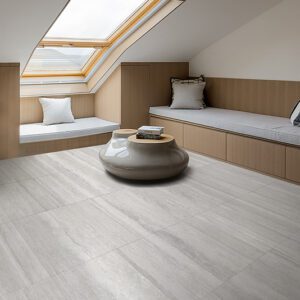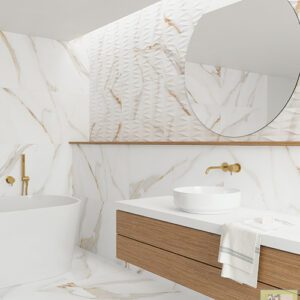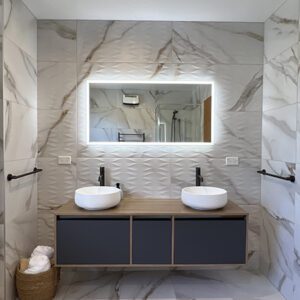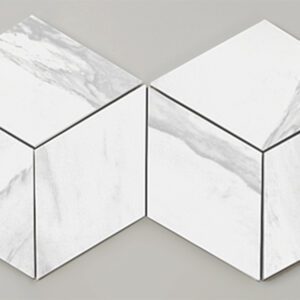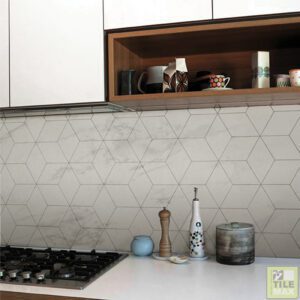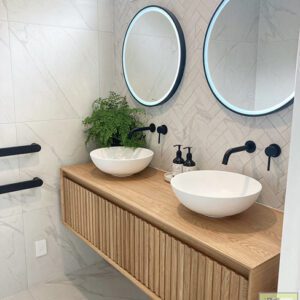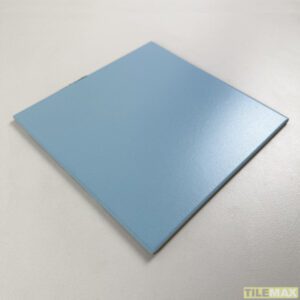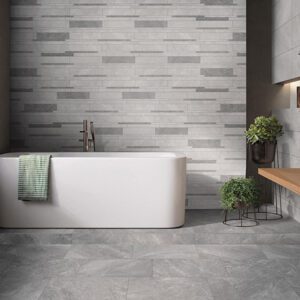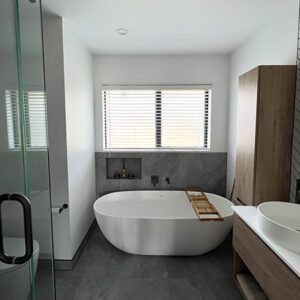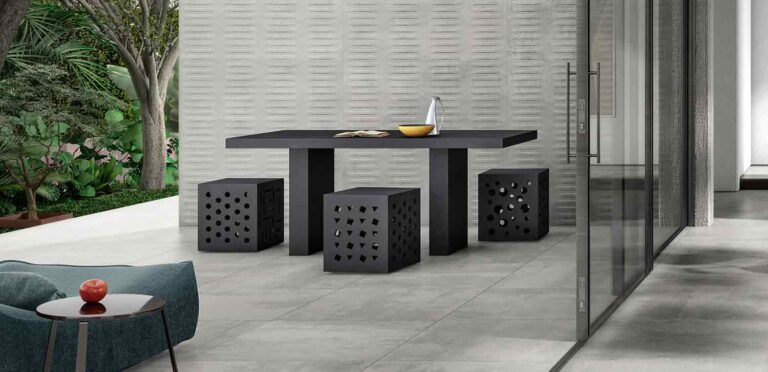-
Agra Botticino Matt 450x900mm
$79.90 per m2(incl GST) -
Alpine Charcoal Matt 600x600mm
$54.90 per m2(incl GST) -
Alpine Stone Matt 600x600mm
$54.90 per m2(incl GST) -
Amalfi Carrara Microflute 600x1200mm
$129.50 per m2(incl GST) -
Amalfi Carrara Touch 600x1200mm
$89.90 per m2(incl GST) -
Anthology Grey Matt 600x600mm
$49.90 per m2(incl GST) -
Anthology Ivory Matt 600x600mm
$49.90 per m2(incl GST) -
Anthology White Matt 600x600mm
$49.90 per m2(incl GST) -
Argento Alabaster Matt 600x1200mm
$79.90 per m2(incl GST) -
Argento Alabaster Matt 600x600mm
$54.90 per m2(incl GST) -
Argento Grigio Matt 600x1200mm
$79.90 per m2(incl GST) -
Argento Grigio Matt 600x600mm
$54.90 per m2(incl GST) -
Artica Antracite Lappato 595x595mm
$129.90 per m2(incl GST) -
Artica Antracite Natural Rectified 595x595mm
$99.90 per m2(incl GST) -
Artica Bianco Natural Rectified 600x600mm
$99.90 per m2(incl GST) -
Artica Grigio Natural Rectified 595x595mm
$99.90 per m2(incl GST) -
Artica Nube Natural Rectified 595x595mm
$99.90 per m2(incl GST) -
Sale!
Artisan Eco Geometric 200x200mm
$169.90Original price was: $169.90.$84.95Current price is: $84.95. per m2(incl GST) -
Artisan Eco Gris 200x200mm
$149.90 per m2(incl GST) -
Sale!
Artisan Eco Lindau 200x200mm
$169.90Original price was: $169.90.$84.95Current price is: $84.95. per m2(incl GST) -
Barcelona Classic 250x250mm
$129.50 per m2(incl GST) -
Barcelona Mallorca 250x250mm
$129.50 per m2(incl GST) -
Barcelona Sand 250x250mm
$129.50 per m2(incl GST) -
Bari Calacatta Matt 450x900mm
$79.90 per m2(incl GST) -
Sale!
Beethoven Stone Lappato 600x600mm
$74.90Original price was: $74.90.$37.45Current price is: $37.45. per m2(incl GST) -
Calacatta Gold 450x900mm
$94.90 per m2(incl GST) -
Calacatta Gold Deco 450x900mm
$134.90 per m2(incl GST) -
Carrara Stone Plus Cube
$19.90 per sheet(incl GST) -
Carrara Stone Plus Polished 300x600mm
$69.90 per m2(incl GST) -
Carrara Stone Plus Polished 600x1200mm
$99.90 per m2(incl GST) -
Carrara Stone Plus Polished 600x600mm
$69.90 per m2(incl GST) -
Sale!
Carrara Stone Plus Polished 73×298.5mm
$109.50Original price was: $109.50.$76.65Current price is: $76.65. per m2(incl GST) -
Carrara Stone Plus Polished Herringbone 457x457mm
$34.90 per sheet(incl GST) -
Sale!
Carrara Stone Plus Polished Hexagonal Mosaic 297x315mm
$29.90Original price was: $29.90.$14.95Current price is: $14.95. per sheet(incl GST) -
Carrara Stone Plus Satin 300x600mm
$69.90 per m2(incl GST) -
Carrara Stone Plus Satin 600x1200mm
$99.90 per m2(incl GST) -
Carrara Stone Plus Satin 600x600mm
$69.90 per m2(incl GST) -
Sale!
Carrara Stone Plus Satin 73×298.5mm
$109.50Original price was: $109.50.$65.70Current price is: $65.70. per m2(incl GST) -
Sale!
Castle Bianco 600x600mm
$69.90Original price was: $69.90.$34.95Current price is: $34.95. per m2(incl GST) -
Sale!
Castle Grafite Deco 600x600mm
$99.90Original price was: $99.90.$49.95Current price is: $49.95. per m2(incl GST) -
Sale!
Castle Grey Deco 600x600mm
$99.90Original price was: $99.90.$49.95Current price is: $49.95. per m2(incl GST) -
Cinca Caribe Blue 198x198mm
$149.90 per m2(incl GST) -
Colorado Bianco 600x600mm
$49.90 per m2(incl GST) -
Colorado Graphite 600x600mm
$49.90 per m2(incl GST) -
Colorado Grigio 600x600mm
$49.90 per m2(incl GST) -
Colosseum Bianco Matt 600x600mm
$64.90 per m2(incl GST) -
Colosseum Greige Matt 600x600mm
$64.90 per m2(incl GST) -
Comet Blanco Matt 600x600mm
$54.90 per m2(incl GST)
find
inspiration
Tilemax are the experts in the latest tile trends. Discover both classic and contemporary styles for kitchens, bathrooms, walls and floors.
Bathrooms
Kitchens
Lounge & Living
Kitchen Floor FAQ's
Kitchen floor tiles can range in price for a couple of different reasons, the main one being where they are sourced from. If for instance we import a tile from Italy the price of shipping is far more than say importing a tile from Australia.
Another factor is how much we import, we may import 500m2 of one tile and only 50m2 of another, giving us greater buying power.
We are constantly bringing in new ranges of tile and as older lines stop being produced we lower the price on these to free up more space in our warehouse.
Kitchen floor tiles have been used for centuries as floor and wall coverings because of their durability and aesthetic appeal.
Tile prices compared to other floor and wall coverings are the most economical material on the market, and after taking installation and maintenance costs in to account, the life expediency of tile will far outlast any other floor or wall covering.
The wide variety of types, finishes, sizes, shapes, colours and patterns of tiles offer a broad range of design possibilities.
The low water-absorption qualities, hardness and durability of many tiles provide a durable, low-maintenance surface finish for a range of internal and external applications. As with all building materials, tiles perform best when correctly selected and installed. They will then offer a surface finish that is:
- Hard and durable
- Fire and heat resistant.
- Chemical resistant.
- Hygienic.
- Stain resistant.
- Slip resistant (depending on the tile).
Porcelain tiles are formed with pressure and heat, this makes them more durable than ceramic tiles. Porcelain tiles have a water absorption rate of less than 0.5 percent.
Ceramic tiles, on the other hand, are manufactured using a kiln-fired method, which makes them more porous. This increases their water-absorption rate, making them impractical for exterior or wet area floors.
Many porcelain products are produced with rectified edges. Typically these tiles have very square edges as a result of cutting or grinding processes which produce tiles with very precise dimensions and permit installation using narrow grout joints.
If the area is fairly regular in terms of overall dimensions, 10 per cent extra should be enough. However, if the tile in question is an unusual shape, or the area to be tiled is a complex shape then 15 per cent is probably a better figure. Having a few spares is a good idea, because if you need more of the same shade (batch number) in the future it may not be available.
Tiles may vary from batch to batch, as shade variation is regarded as an inherent feature of tile production.
We will only supply one batch of tiles for a project unless prior agreement has been made, so if you need to re-order quote the shade or batch number which appears on the box.
A lot of contemporary tiles replicate the appearance of natural stone or timber, and they vary in appearance in an attempt to mimic the natural product.
A scale has been introduced to communicate the degree of variation intended.
V1: Uniform Appearance - Minimal differences among tiles from the same production run.
V2: Slight Variation - Clearly distinguishable differences in texture/pattern with similar colours.
V3: Moderate Variation - While colours present on a single tile is indicative of the colours expected on the other tiles, the amount of colours will vary significantly.
V4: Substantial Variation - Random colour differences between tiles so one tile may have totally different colours from that on other tiles.
Glazed products are already stain proof and generally do not require sealing meaning they consequently are a popular choice for residential situations (especially bathrooms) as they are easy to clean and maintain. You may apply a penetrating sealer on your unglazed tiles or your grout joints. The penetrating sealer is an invisible, stain resistant shield that is absorbed into the surface.
Some unglazed products have a surface treatment (Nano seal) applied during the final stages of manufacturing which penetrates the surface pores and assists in resisting staining. However some products – especially polished porcelains where small “micropores” have been created during the polishing process – may require sealing to protect against staining. Ask one of our team in store for more information regarding this.
Tiles are a great conductor of heat, this is why touching a tile when it’s been in the sun feels warm, this also has the opposite effect and will feel cold to the touch in the winter months.
Due to the weather climate in New Zealand we recommend using under tile heating as an energy efficient solution to heating as it radiates the heat evenly across the room. The added benefit of using a programmable thermostat gives you the option of setting the heating to turn on and off at selected times, making it an energy efficient means of heating.
A polished floor no matter what material used will be more slippery than a textured or matt finish floor, this is not to say that you can’t use polished tiles in your entry or kitchen though. Polished tiled floors have been installed in residential kitchens for years.
Care needs to be taken when deciding on what floor finish to use and we suggest coming into one of our showrooms to feel the different finishes available.
The majority of our kitchen floor tiles are porcelain or ceramic, both of which have a very low surface porosity. This means that they in general very easy to clean. Of course we always recommend choosing the right tile surface for your project, something with a grippy antislip in a kitchen will be harder to clean than a matt finish or polished tile. We carry the Aquamix range of tile cleaning and maintenance products, ask one of our friendly team for their recommendations.
Explore other categories
Can’t find what you are looking for, check out some of our other tile categories.



















